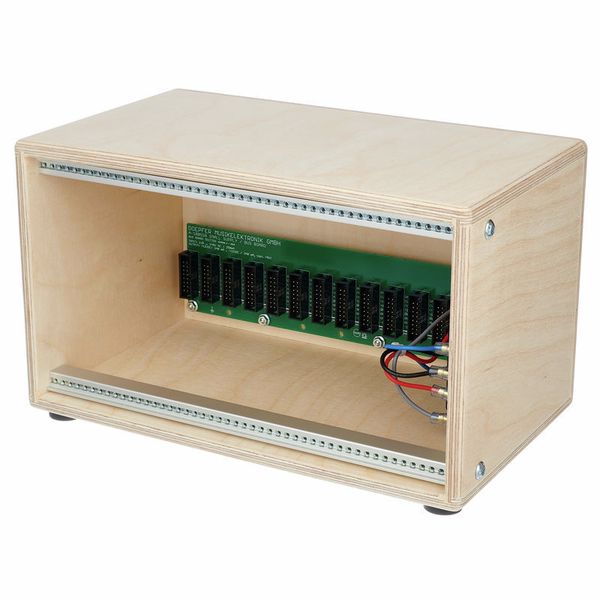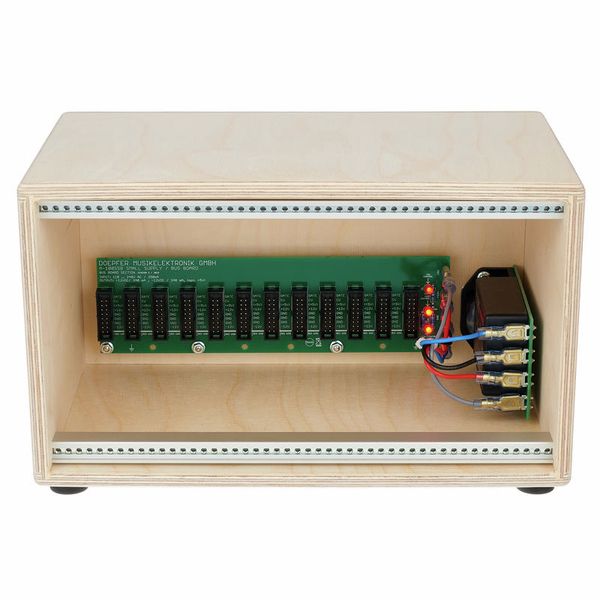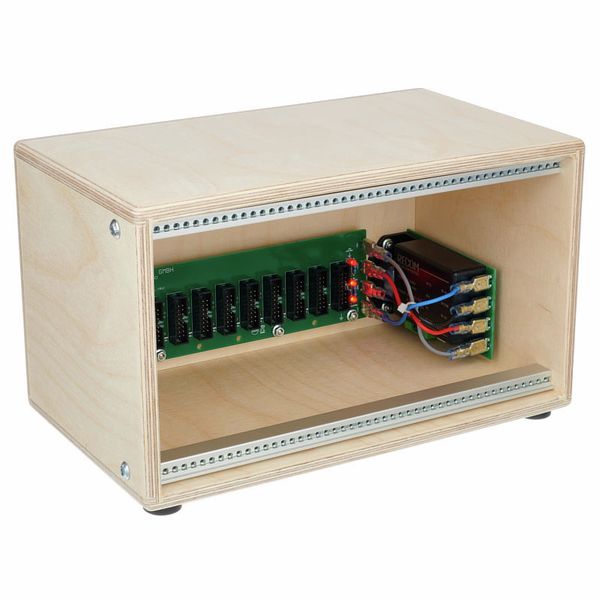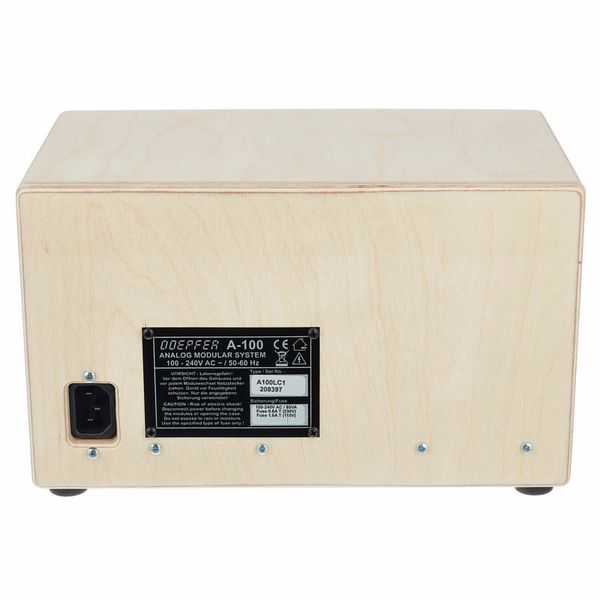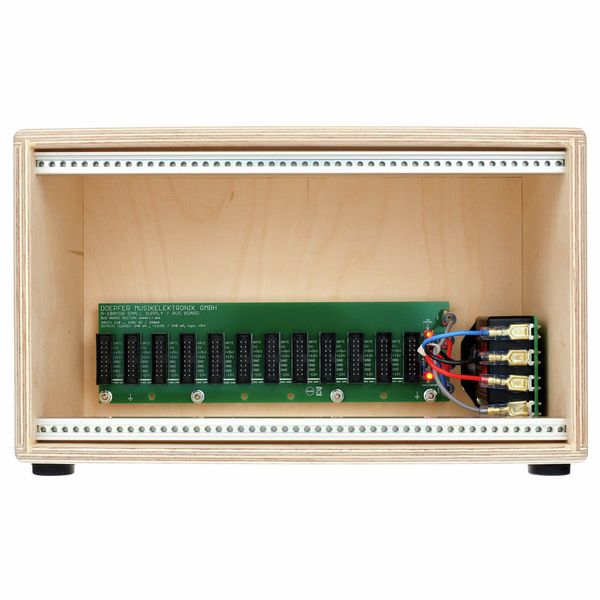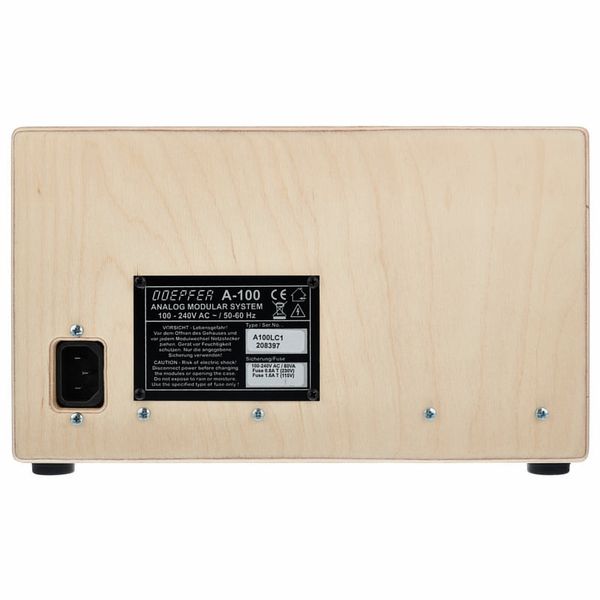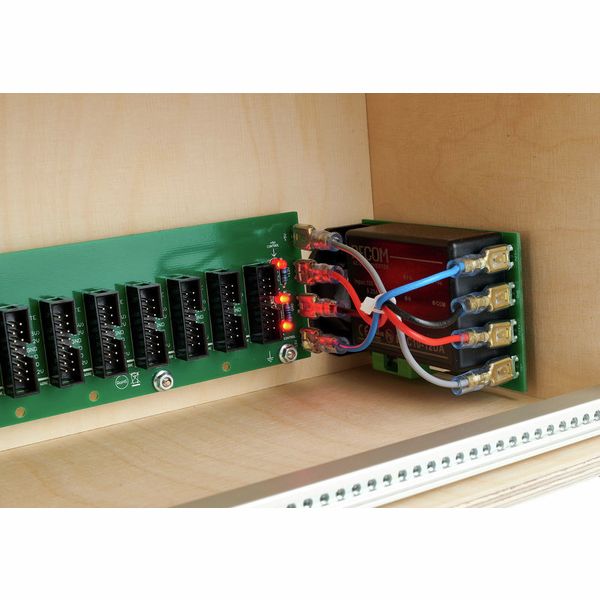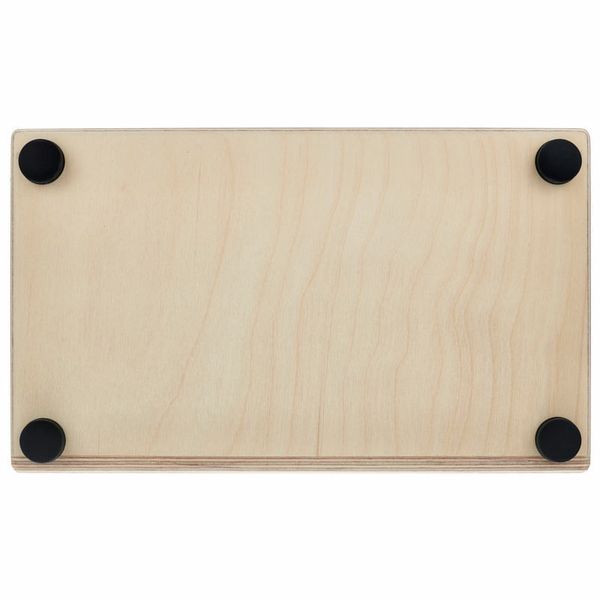I wanted to put together a small Eurorack setup and this case is perfect. It's small & portable, plus the wood is unfinished so you can paint or varnish it any way you like.
It has just about enough power to run enough modules to fill it, I would have preferred a power switch which is the only reason it drops a star (the power is always on when it is plugged in) but it works great.
I intentionally wanted a case that would limit the amount of modules I could buy because Eurorack has the capacity to be a never-ending cash sinkhole! So this case forces you to think carefully about what kind of setup you need and to choose your modules carefully.
I was going to buy the Cre8 NiftyCase, which is a bargain especially considering it has MIDI-CV conversion built-in but unfortunately it was too shallow for some of the modules I wanted and I didn't want that limitation. So I bought this with a separate Kenton MIDI-CV converter.
When buying a Eurorack case, there are three main things to consider:
1. The depth - different modules have different depths and some shallow cases won't house certain modules. This has the depth needed for pretty much any module, although the right-hand side of the case has power components on the right side so the depth is more limited for a few HP on this side of the case. This shouldn't be a problem, most people will choose modules of different depths so you just put the shallower ones on this side.
2. Power rating - a case's power rating needs to put out enough current to power all the modules you are planning to buy, you need to add up all the power requirements of all the modules you are considering for purchase to make sure the case can power them all.
3. Size - different modules are different sizes in width, so you need to add up the width (measured in HP) of all the modules you are planning to buy & make sure you can fit them all in.
If this case fulfills all of that criteria for you, it's an excellent choice and I can fully recommend it. Good luck and have fun on your Eurorack journey!



